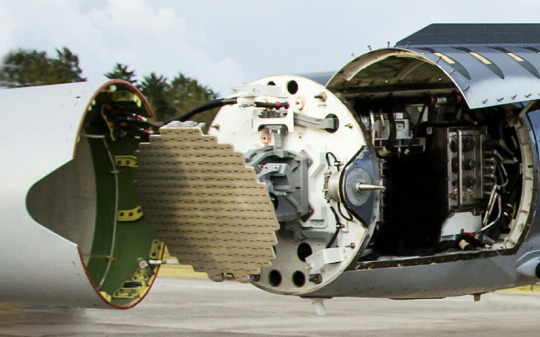#FireControlRadarMarket
Explore tagged Tumblr posts
Text
Airborne Fire Control Radar Market Future Trends Highlighting Technological Progress and Strategic Defense Shifts
The airborne fire control radar market is experiencing a transformative phase driven by evolving combat requirements, rising defense budgets, and increasing geopolitical tensions. Governments and military organizations worldwide are investing heavily in modernizing their airborne systems, leading to a surge in the adoption of advanced radar technologies. These systems are no longer viewed as optional components but as essential assets for ensuring mission success in both defensive and offensive operations.

One of the most defining future trends in this market is the integration of artificial intelligence (AI) and machine learning (ML) into radar systems. These technologies significantly improve the radar’s ability to process complex data in real-time, enabling faster target detection, identification, and tracking. AI-powered fire control radars can automatically prioritize threats, manage multiple targets simultaneously, and reduce operator workload, which is especially critical in high-intensity conflict environments.
Additionally, the transition towards active electronically scanned array (AESA) radar systems is becoming more prominent. AESA radars offer numerous advantages over traditional mechanically scanned systems, such as enhanced resolution, faster beam steering, and improved resistance to electronic jamming. These capabilities are vital for modern fighter aircraft and unmanned aerial vehicles (UAVs) that operate in electronically contested environments. Countries like the U.S., China, India, and Russia are actively upgrading their aerial fleets with AESA-enabled radars, setting a clear direction for the market’s future.
Another important trend is the miniaturization of radar systems without compromising performance. As UAVs and smaller aircraft become more integral to military operations, there is a growing need for compact, lightweight radars that can deliver the same level of accuracy and functionality as those used in larger aircraft. Companies are investing in R&D to develop scalable radar solutions that can be customized for different platforms. This flexibility is expanding the market’s reach and diversifying its applications.
The market is also witnessing the growing use of multifunction radar systems. These systems combine surveillance, tracking, and fire control functionalities into a single platform, optimizing cost and weight while enhancing operational efficiency. Multifunction radars are particularly beneficial in multi-role aircraft, where space and weight limitations are crucial factors. This shift towards consolidation is a response to the increasing complexity of aerial warfare, where aircraft must perform various tasks simultaneously.
Global defense strategies are also influencing the market’s trajectory. With the increasing emphasis on joint and network-centric warfare, fire control radars are now being developed with enhanced interoperability. Modern systems are designed to share data across platforms—manned and unmanned, air and ground—creating a cohesive situational awareness environment. This capability ensures that real-time target information is accessible across the defense ecosystem, leading to better-coordinated attacks and efficient resource deployment.
Furthermore, regional tensions and modernization programs are propelling demand in emerging markets. For instance, countries in Asia-Pacific and the Middle East are rapidly enhancing their defense capabilities, leading to increased procurement of next-gen aircraft equipped with sophisticated radar systems. These nations are not only buyers but are also increasingly becoming developers, engaging in collaborations and joint ventures to create indigenous radar technologies.
Environmental adaptability is another area seeing innovation. Modern airborne fire control radars are now being designed to function effectively across a variety of operational environments—from high-altitude arctic zones to low-visibility desert conditions. Enhanced signal processing and robust material design ensure that these systems remain reliable despite harsh external factors, a necessity given the global nature of modern military operations.
Cybersecurity concerns are also shaping future radar technologies. With the rising risk of cyberattacks on military assets, radar systems are being equipped with cybersecurity features to protect sensitive data and maintain operational integrity. Secure software frameworks and encrypted data links are being incorporated to mitigate the risk of unauthorized access or manipulation.
Looking ahead, the airborne fire control radar market is poised for robust growth driven by these technological advancements and strategic imperatives. The next generation of radar systems will not only enhance combat capabilities but also enable smarter, faster, and more agile decision-making in complex battle scenarios. As nations continue to prioritize air superiority and defense modernization, the demand for sophisticated airborne fire control radar systems will remain strong, ensuring a dynamic and competitive market landscape for years to come.
0 notes